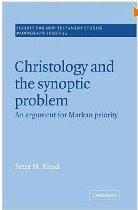This article discusses letter delivery in letters identifiably Jewish (or reported within Jewish sources) between 200 BC and AD 200 with a view to considering whether (and to what extent) the letter carrier has a role in the communication between sender and receiver. These include manuscript letters (from the Dead Sea area and from the papyri), rabbinic letters, letters in 1 & 2 Maccabees, Josephus and Philo.
Here is the conclusion:
Given the variety of material considered it is important to note that any generalizations will be a little dangerous. It is clear that the letter carriers do sometimes have an important role in the communication process (esp. when named, where it is generally assumed that they will have a larger role). An important place is given to specifically ambassadorial language in connection with the role of envoys/embassies in the delivery of official and royal letters. This can be both real/historical and redactionally introduced (e.g. in Maccabean literature and Josephus). From the notes of the Bar Kokhba revolt through to the royal letters of Jewish kings we do find letter carriers involved in reinforcing and supplementing the message of the written letter and thus facilitating the communication process envisaged by the author and sender of the letter.













No comments:
Post a Comment